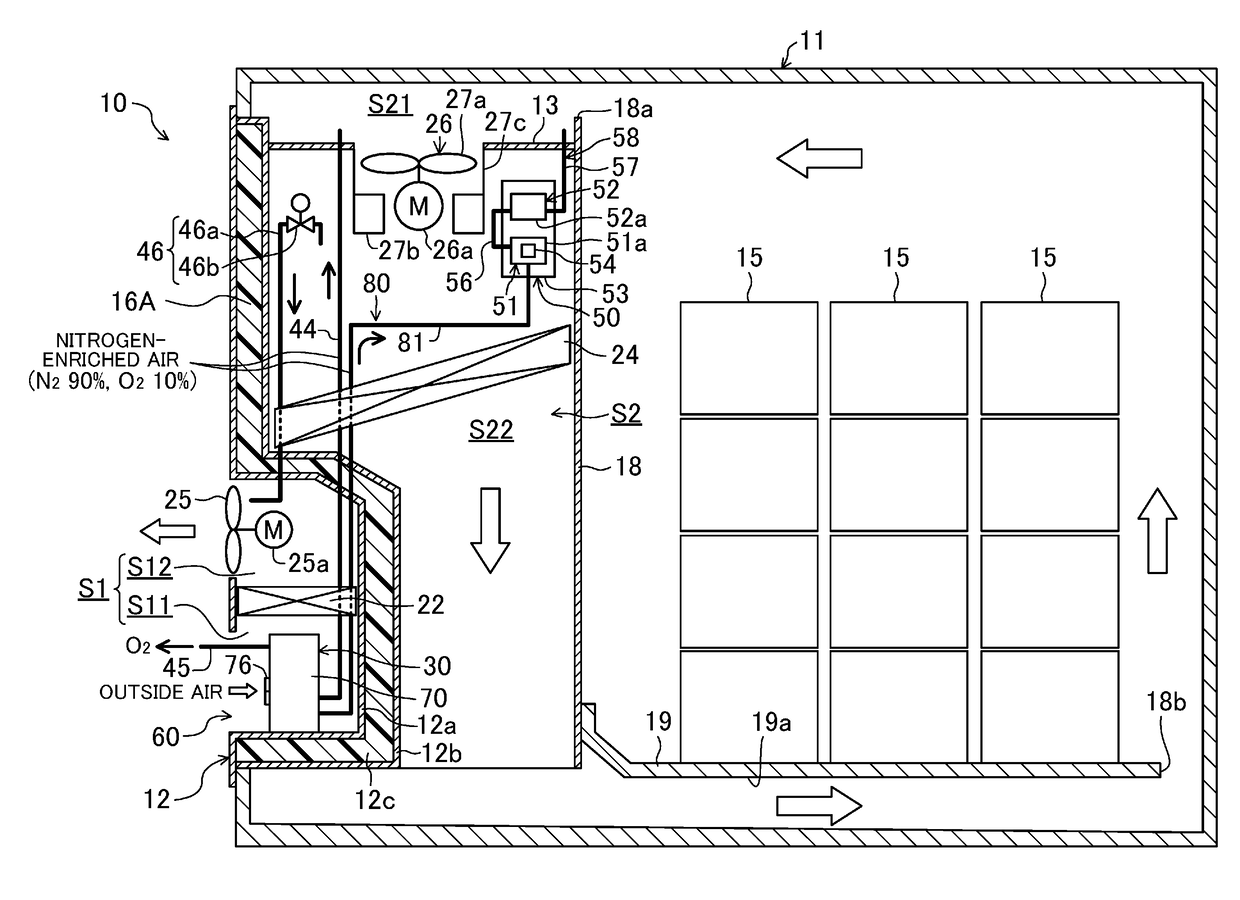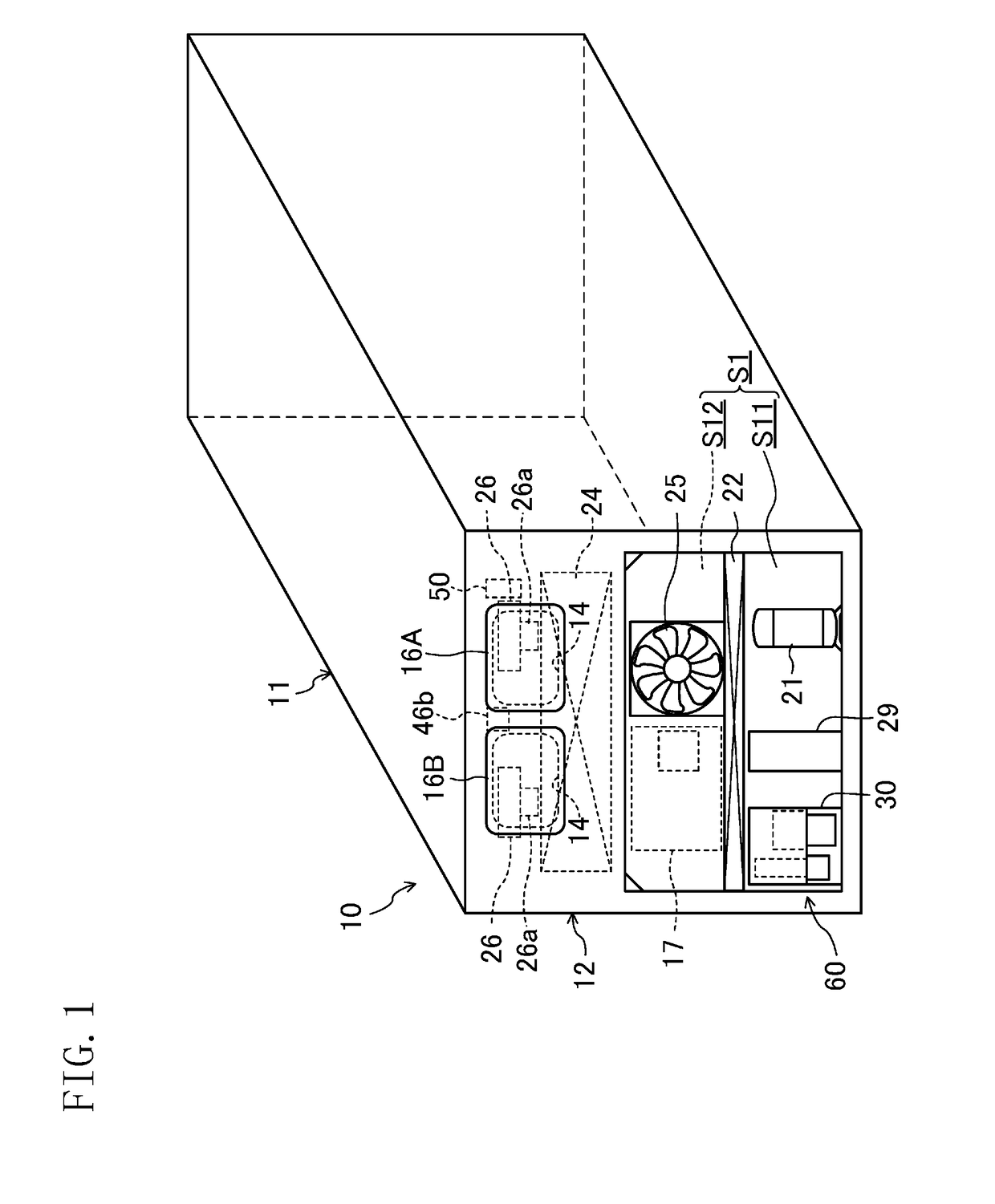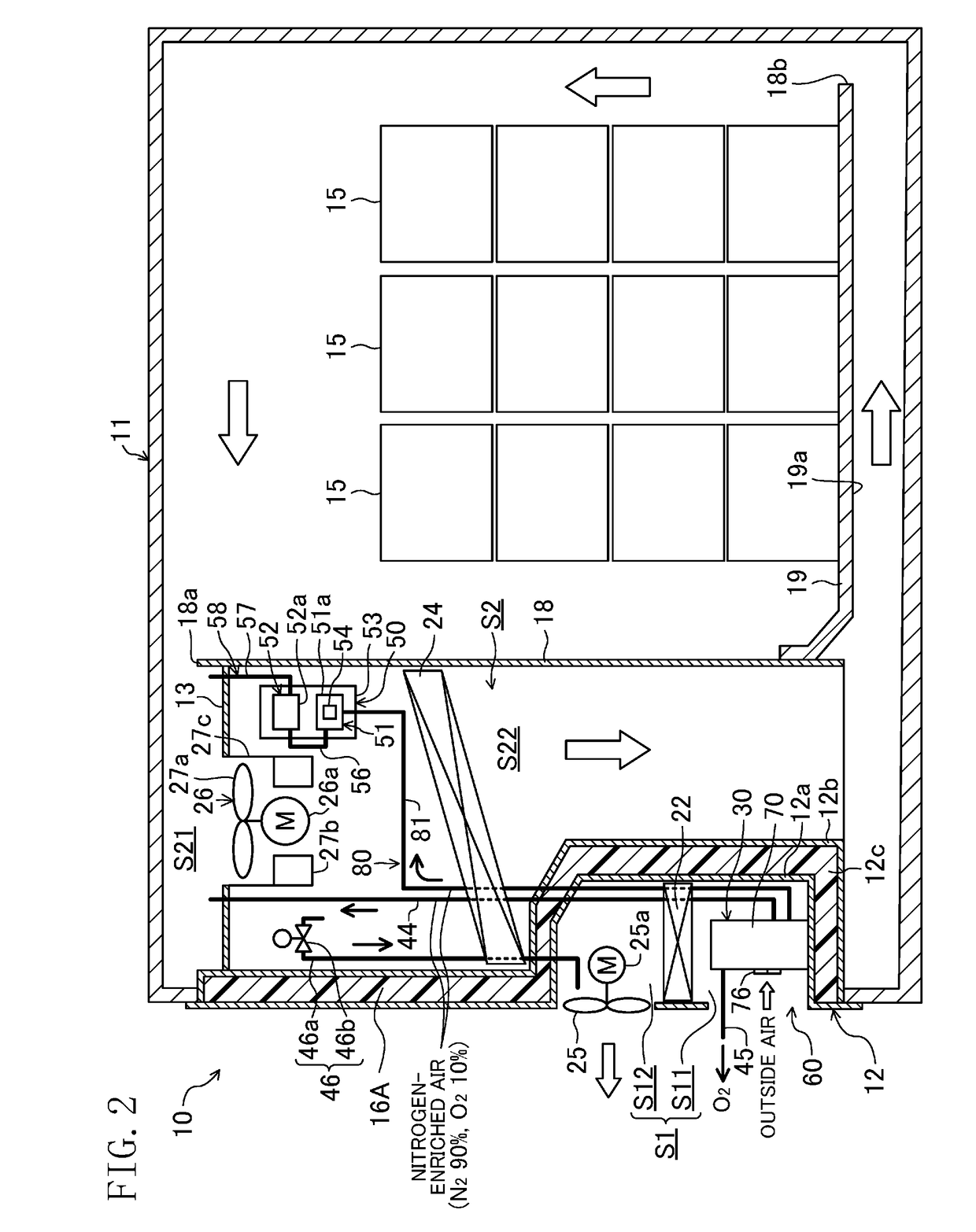Refrigeration apparatus for containers
- Summary
- Abstract
- Description
- Claims
- Application Information
AI Technical Summary
Benefits of technology
Problems solved by technology
Method used
Image
Examples
first embodiment
Advantages of First Embodiment
[0169]As can be seen in the foregoing, according to the first embodiment, the exhaust tube (exhaust passage) (46a) is open on the suction side of the external fan (25) in the external storage space (S1). Thus, rotation of the external fan (25) allows the pressure on the suction side of the external fan (25), around which the external end of the exhaust tube (46a) opens, to become lower than the pressure on the blowout side of the internal fans (26) around which the internal end of the exhaust tube (46a) opens. Thus, even if the pressure in the container (11) is lower than the outside pressure, the external fan (25) allows the pressure in a space in which the internal end of the exhaust tube (46a) opens to become higher than the pressure in a space in which the external end of the exhaust tube (46a) opens. Due to the pressure difference between the ends of the exhaust tube (46a) caused by the rotation of the external fan (25), the air in the internal sto...
second embodiment
Advantages of Second Embodiment
[0177]As can be seen, according to the second embodiment, the exhaust valve (46b) is automatically opened or closed based on the difference between the pressure in the container (11) and the pressure in the second space (S12) without being controlled by the controller (55), just like in the first embodiment. Thus, the pressure in the container (11) is stabilized at a higher level than the pressure in the exterior second space (S12) only by the predetermined pressure value. As a result, the gas supply operation and the outside air introducing operation are stably performed. Thus, the composition of the air in the container (11) (oxygen concentration and carbon dioxide concentration) may be controlled easily and accurately.
third embodiment
[0178]As shown in FIG. 11, a third embodiment is a modified version of the first and second embodiments, in which the positional relationship among the condenser (22), the external fan (25), the electrical component box (17), and the inverter box (29) in the external storage space (51) is modified.
[0179]Specifically, according to the third embodiment, the condenser (22), which has extended linearly in a horizontal direction in the first and second embodiments, has three heat exchange surfaces (22a, 22b, 22c) arranged in the shape of U. The condenser (22) is placed above the center of the external storage space (S1) with the heat exchange surface (22a) serving as a top surface, the heat exchange surface (22b) as a right side surface, and the heat exchange surface (22c) as a bottom surface. Further, the external fan (25) that has been arranged above the condenser (22) in the first and second embodiments is placed inside the U-shaped condenser (22). Likewise, the electrical component b...
PUM
 Login to View More
Login to View More Abstract
Description
Claims
Application Information
 Login to View More
Login to View More - R&D
- Intellectual Property
- Life Sciences
- Materials
- Tech Scout
- Unparalleled Data Quality
- Higher Quality Content
- 60% Fewer Hallucinations
Browse by: Latest US Patents, China's latest patents, Technical Efficacy Thesaurus, Application Domain, Technology Topic, Popular Technical Reports.
© 2025 PatSnap. All rights reserved.Legal|Privacy policy|Modern Slavery Act Transparency Statement|Sitemap|About US| Contact US: help@patsnap.com



